Author: Matt Del Fiacco
In addition to being easy to make, hard cider is ripe for both experimentation and tweaking. From spicy and dry ciders to fruity and sweet, there seems very little that doesn’t pair well with fermented apple juice. One such example is habanero peppers, which Blake’s Hard Cider out of Armada, Michigan features alongside mango in their El Chavo, a commercially produced cider that inspired me to play with this fiery fruit.
Indeed, peppers are technically fruit and, as any true hot-head will attest, present with myriad flavors… if one is able to get past the heat. At upwards of 100 times hotter than a jalapeño, Habaneros certainly aren’t for the faint of heart, though those who are capable are treated to a delectably sweet and floral flavor.
My wife isn’t much of a beer drinker, but she has been known to enjoy a glass of cider, which has led me to be more ambitious in my cider experimentation. We both love El Chavo from Blake’s, so I’ve been working on my own habanero hard cider recipe for awhile and finally settled on what I think is a really good example. Over several iterations, I’ve learned I prefer a straightforward habanero hard cider with no other fruit additions to allow the flavors from the pepper to take center stage, while a touch of back-sweetening makes for a nice canvas for the heat.
| Making Habanero Hard Cider |
As much as I enjoy cider made with fresh pressed juice, I’ve grown quite fond of using store-bought juice for those batches I plan to use adjuncts in.
INGREDIENTS
5 gallons preservative free apple juice
1 pack Danstar Nottingham yeast
12 grams Go-Ferm
2 grams Wyeast Yeast Nutrient
4 habanero peppers
1 can apple juice concentrate
23 grams acid blend
7 grams potassium sorbate
PROCESS
With 5 gallons of juice on hand, I gathered all of the materials for this simple batch.
I added the packet of yeast and a pinch of Go-Ferm to a small amount of water for rehydration.
Next, I added some yeast nutrient to my sanitized fermentation vessel.
The apple juice was then poured vigorously into the fermentor.
Finally, I poured the rehydrated yeast slurry into the juice.
The filled fermentor was placed in my chamber that was set to maintain a steady 64°F/18°C.
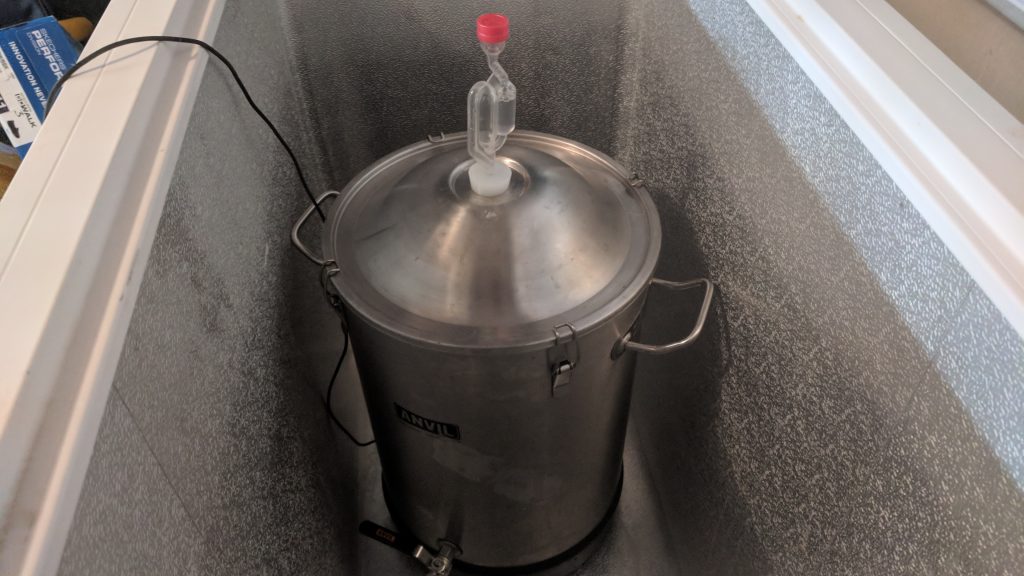
With the 15 minute “brew” day complete, I began pepper preparation. I’ve found that 4 habaneros per 5 gallon batch works well, though more or less can be added to suit one’s preferences. After chopping and de-seeding the peppers, I placed them in a some vodka to soak while the cider fermented.
When fermentation activity had dwindled 2 weeks later, I added the habaneros, vodka and all, to the fermentor. I let the peppers mingle with the cider for 4 days before proceeding with packaging, which consisted of adding potassium sorbate to a sanitized keg then racking the fermented cider on top of it.
I pulled a sample the following day and used it to determine what other adjustments to make. I opted to forgo adding tannin to this batch, instead using some Acid Blend to impart a nice level of tartness.
I added a single can of apple juice concentrate to bump the sweetness up a little bit then resealed the keg and began a brief period of burst carbonating. I like a light carbonation on my cider and aimed for 2.2 volumes of CO2. After a few days of cold conditioning, the habanero hard cider was bubbly, clear, and ready to drink!
| IMPRESSIONS |
More often than not, when I tell people I’m serving them a habanero cider, I get looks of shock, disgust, and/or curiosity. I’ve served variations of this cider at festivals and enjoy watching people’s faces light up then have their friends sample it, often without telling them what it is. And it’s common that tasters come back for more, suggesting habanero cider is far more accessible than many might assume.
Paired with light carbonation and served cold, the layers in this particular habanero cider are all well defined and complementary, whereas I felt that other fruit additions I made in the past detracted from the cider itself. Plus, focusing on mingling the tartness and sweetness of the cider with the fruity notes and heat from the peppers has resulted in a crisp, clean, well balanced, and very drinkable cider. A touch of heat was in the exhale and the aftertaste while the fruit character from the peppers was fairly restrained, and the upfront sweetness from the concentrate rounded out the whole experience. Some have commented this cider is best had in small samples, but I find myself pulling pint after pint when I have it on tap.
If you have thoughts about this recipe or experience making hard cider yourself, please feel free to share in the comments section below!
Support Brülosophy In Style!
All designs are available in various colors and sizes on Amazon!
Follow Brülosophy on:
FACEBOOK | TWITTER | INSTAGRAM
If you enjoy this stuff and feel compelled to support Brulosophy.com, please check out the Support page for details on how you can very easily do so. Thanks!

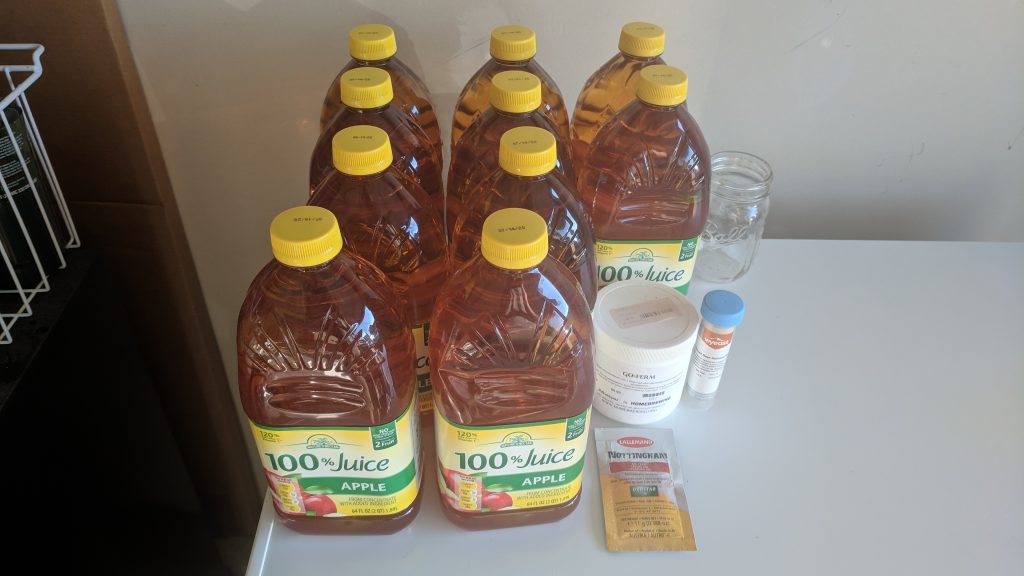
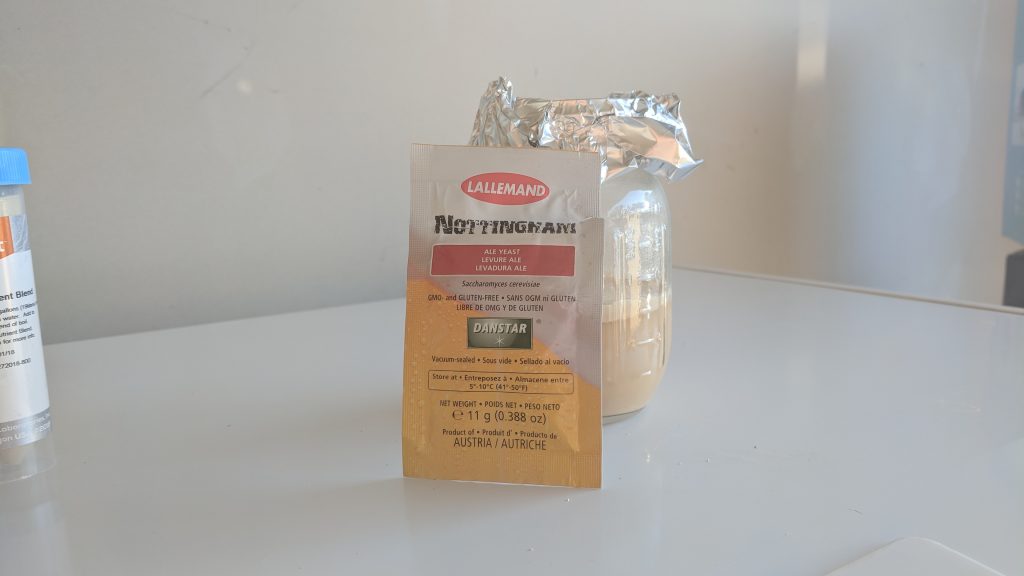
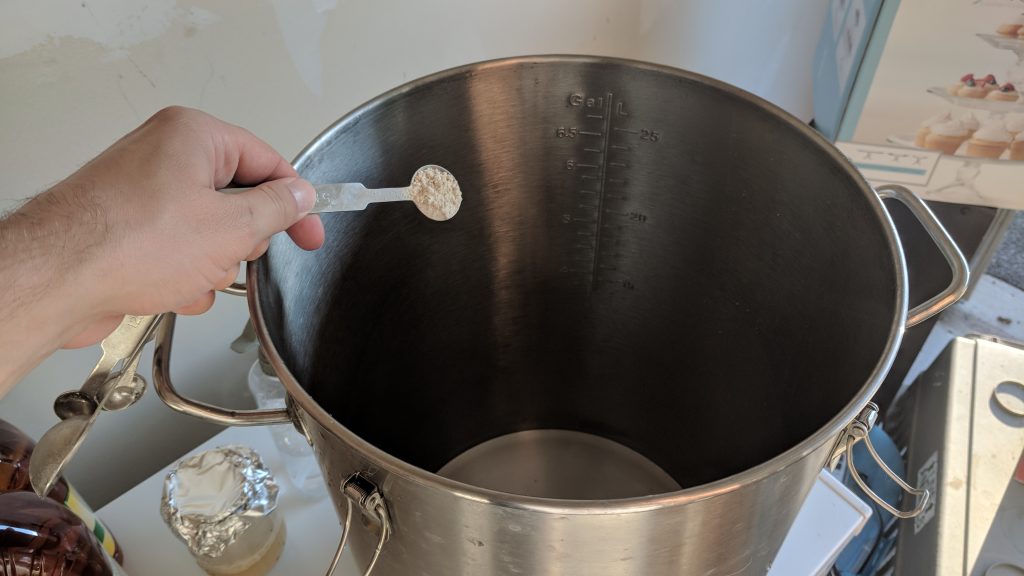
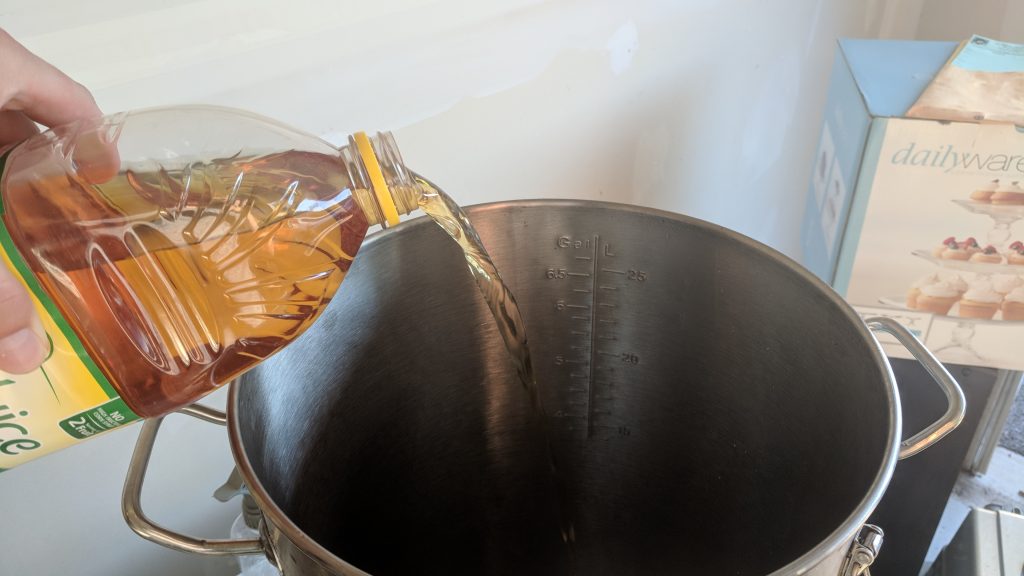
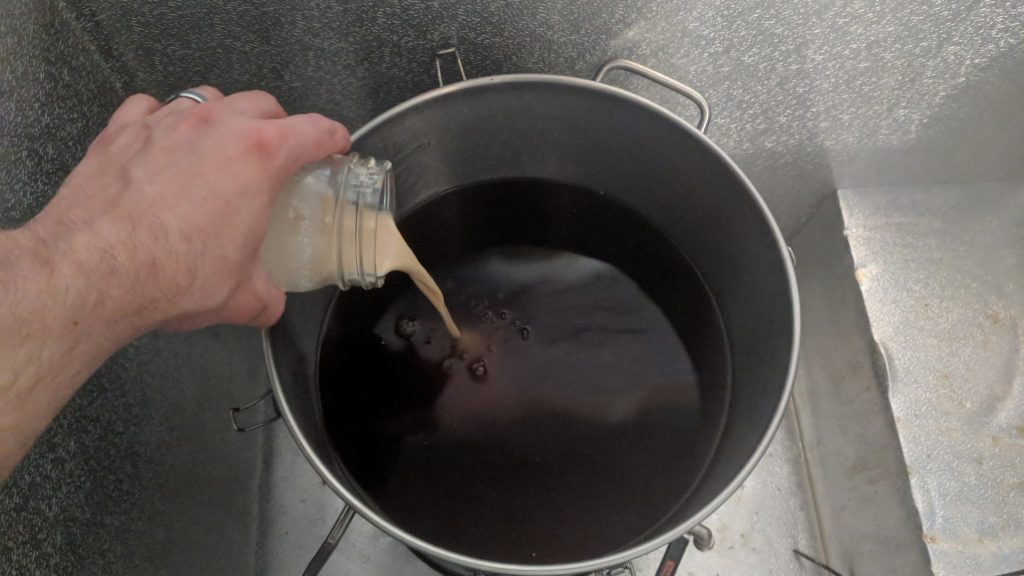
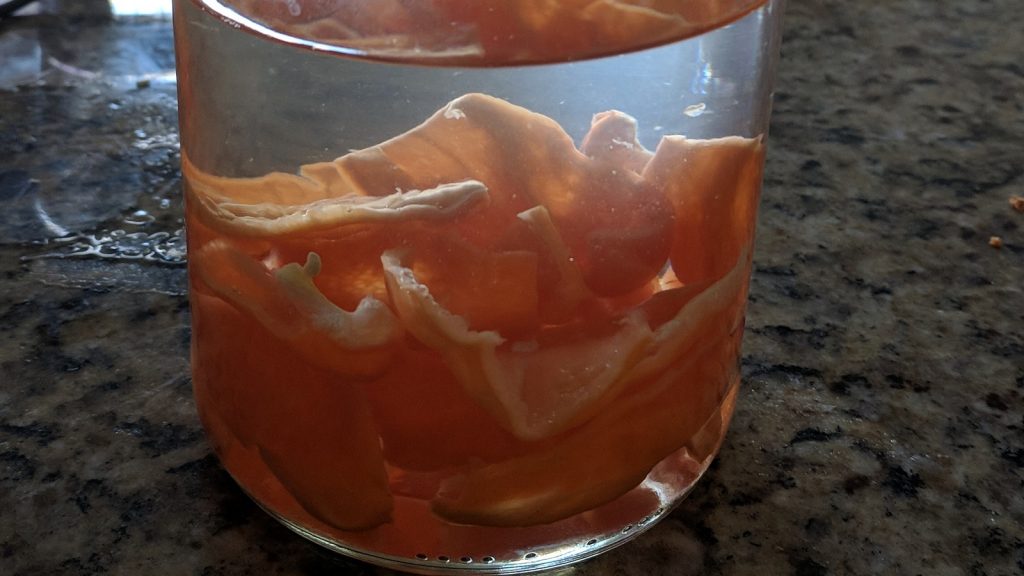

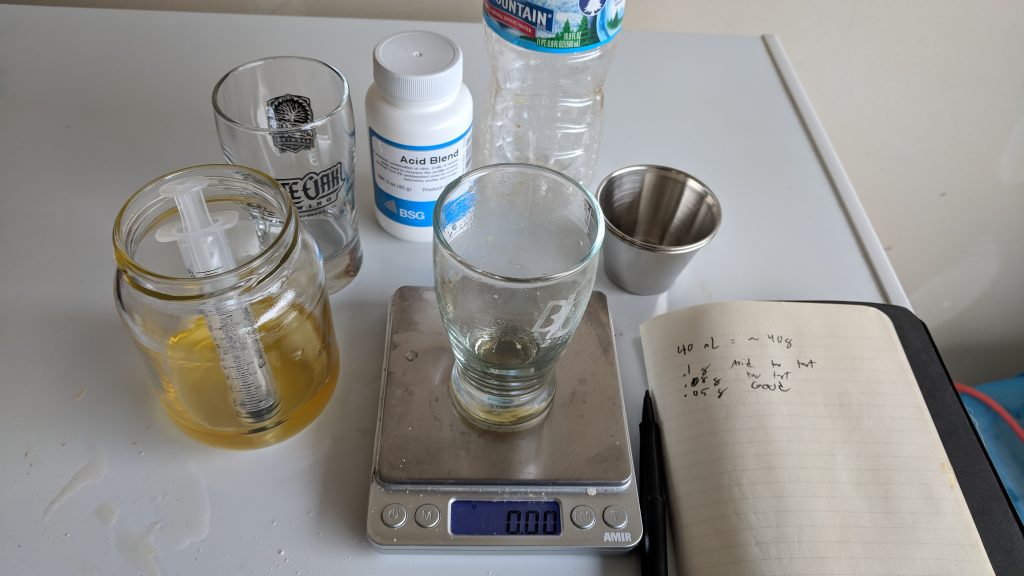
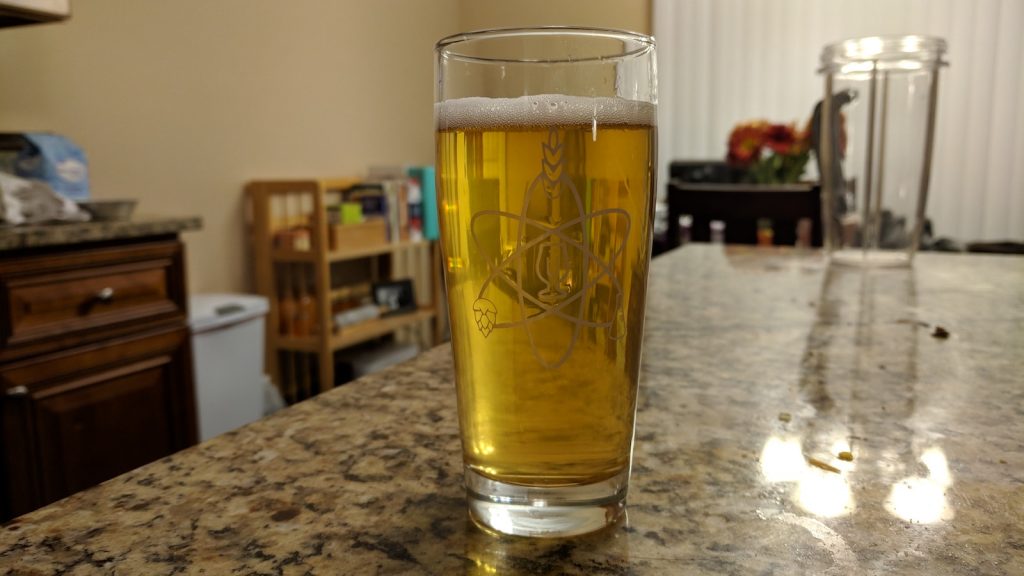










18 thoughts on “Brü It Yourself | Habanero Hard Cider”
What is this acid blend you added to give a tartness? Can you expand on that? Thanks!
So I used the Acid Blend from BSG, but there are other varities available. Essentially, it is a blend of the three main acids people typically use cider/wine adjustments: malic acid (apples), citric acid (citrus fruits), and tartaric acid (grapes).
These pre-made blends will just contribute a bit of each to your product (weighted, not equal percentages) and contribute that tartness. Some people like to blend in those individual acids themselves, to get specific characters. The acid blend is just a simple solution. Less control, but easier.
Great article Matt! I’ve been thinking about trying a batch of hard cider, to serve during the holidays, ever since the podcast on hard cider. I have never brewed cider nor even really looked into the details so I have a couple of questions. First, do you only need potassium sorbate to stop fermentation before back sweetening or does it also require meta-bisulphite in conjunction? Second, back sweetening, I am assuming you are dropping the concentrate in the keg, purging with CO2, and the shaking or swirling the keg to incorporate?
Again, great article! I love the seemingly many possibilities for experimentation cider making seems to have without being time consuming. I feel like I could really get creative with flavor combinations and not feel bad tossing a bad batch. Which is a huge plus with two small kiddos in the house. Thanks again!
Hey Will! Highly recommend having hard cider around, it’s a great alternative and I also find it less “heavy” than beer, if that makes sense.
1) Yes, you only need Potassium Sorbate for backsweetening. I follow the instructions in Ken Schramm’s Complete Mead Maker for that, he knows what he is talking about. The potassium sorbate effectively stops yeast from re-producing, so live yeast will continue to ferment available sugars but will not produce new yeast. That’s why we need to be sure the cider is done fermenting before backsweetening.
The reason people also tend to use metabisulfite at this step is because it acts as both a yeast inhibitor and anti-oxidant. It doesn’t “kill” yeast, just inhibits it. Along with the potassium sorbate, it’s an effective combination. So I don’t think it is required, but it doesn’t hurt to use either.
2) I do this step a bit differently, depending on the circumstances. For this batch, I did as described. Pour into the keg, couple oxygen purges, and then gentle swirling. It will be incorporated into the solution given a short amount of time. It really depends on your recipe and your approach.
Cider is quick, easy, and delicious. Plus cheap! Even if you buy good, fresh-pressed juice, it isn’t too pricey.
Can you confirm the amount of Go-Ferm? The ingredient list says 12g but the article says “a pinch” which would be significantly less than 12g. I’m assuming 12g is correct since the manufacturer says to use 1.25 X yeast weight.
12 grams confirmed!
Do you have a source/book you would recommend for how to adjust your cider. Right now I am winging it with acid and tannin adjustments. I’m looking for a good process, which first, etc..
Perfect! Indeed cider cheap, delicious and good for experimentation. I JUST pulled a sample last night from a small keg (2 gal) based on Jason C cranberry/ginger cider. I harvested 2 lbs of berries from my Korean Dogwood (cross mango and pumpkin) and also added whole berry cranberry sauce and fresh chopped ginger and some cinnamon to secondary. Hoped for Autumnal Cider. Backsweetened with 1 can. The Belle Saison yeast dried it out and offered some spiciness. Real nice cider. I have enjoyed habanero blonde ales this summer and was planning on one this coming summer. Might have to dry this cider first! Agree …. cider is lighter and offers a choice to guests. Never thought of this combo in cider. Thanks, Jason.
Thought I’d share an excellent cider recipe of you are looking for a sweet country cider like downeast, cheers all.
https://www.homebrewtalk.com/forum/threads/5-day-sweet-country-cider.265986/
What is your method for adding the concentrate for back sweetening? Just thaw, dump in the keg and give it a shake? Doesn’t the concentrate fall out of suspension?
Has anyone repitched Yeast (must) when making cider? Any concerns to consider?
In relation to bottle conditioning- I know in a previous podcast episode this was a big topic of discussion for cider with multiple safety issues. How do you feel about the use of champagne bottles? Would this mitigate any if the issues?
If I were to bottle this, how long should I wait after adding the potassium sorbate to proceed to the next step?
Hi! Just tapped this cider yesterday and it was a hit with everyone that came to try it! My wife being a big fan of jalapeño margaritas insisted I make this when I showed her the recipe. Unfortunately though the day prior the Cider did not have much spiciness/heat. In an attempt to get that spiciness out I had to add more habaneros because the initial ones did not contribute much heat and in retrospect it was most likely because when I deseeded the habaneros I also removed the white pithy part which in further research contains a good chunk of the heat. So I muttled a few more habanaros (with the seeds still intact) in vodka, let them sit over night and added a miIliliter at a time of the habanaro infused vodka to a pint of the cider until I reached a certain level of spiciness and scaled the vodka addition up to 5 gallons. Not sure if this was the proper way to infuse the spiciness into the cider but it still saved the day. It had the perfect balance of sweetness and heat. Delicious and surprisingly crushable, will be making again.
You mentioned you have made several iterations before landing on no additional fruit additions. I’m curious what other fruits you had tried. I have never made a cider before, but like others my wife really enjoys them. One of the locals she loves is a habanero cider with pomegranate and cinnamon. I was thinking of attempting something similar, or perhaps a blueberry habanero.
I just made a few variations of habanero cider. I noticed that it had much more heat when I tasted it at bottling and had mellowed a bit a couple weeks later after conditioning. Is this a result of oxygen exposure due to bottling, or just aging (does the same happen with your keg)?
I have made habanero IPA and a Imperial Stout with a hot pepper blend, cacao nibs, cinnamon, and vanilla beans. I have even made beers using Habanada peppers (basically habanero’s without the heat), and that has worked well too. Personally, I am a spice whore and LOVE all things spicy. My husband is OK with spice but it’s not his favorite. I have never even thought of making a spicy cider, but I think I will give this a go. I may use both habanero and habanada peppers to get the “flavor” without all the spice. Since my husband is the real cider drinker, it makes sense to cater more to his pallet. Thanks so much for this recipe and the cool idea behind it, not to mention all the amazing work you guys do.
Cheers,
Will